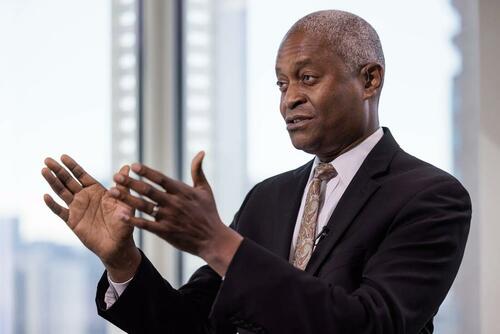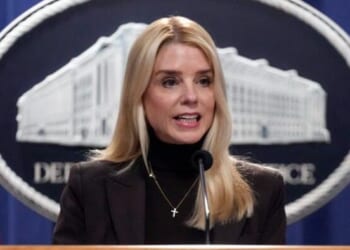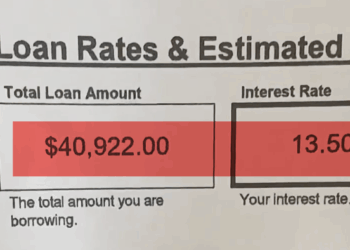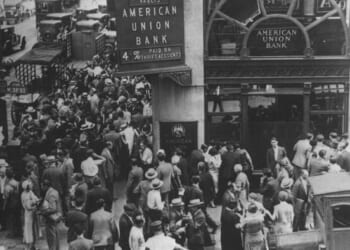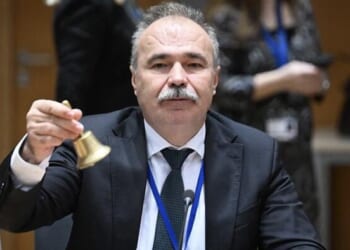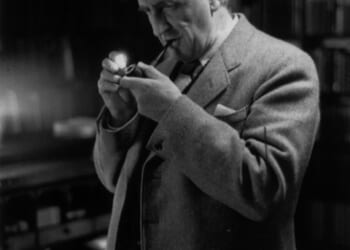More turnover at the Fed ahead of what can be a historic, for the US central bank, year as Trump prepares to stack the Fed with a deep bench of uber-doves.
With the “fired” Lisa Cook’s lawsuit marinating at the Supreme Court, moments ago the Atlanta Fed announced that its president Raphael Bostic would retire at the end of his current term in February.
Bostic, who in the press release was described as “the first African American and openly gay president of a regional Federal Reserve Bank in its 111-year history” took the helm at the Atlanta Fed in 2017; he will step down on Feb. 28, the Atlanta Fed said in a statement.
“I’m proud of what we accomplished during my tenure to turn the lofty goal of an economy that works for everyone into more of a reality, and I look forward to discovering new ways to advance that bold vision in my next chapter,” Bostic said in the Wednesday statement.
Bostic, a hawk who has been vocal this year about the risks of lingering inflation and urged his colleagues to be cautious about lowering interest rates due to tariffs, is perhaps best known for a big trading scandal, where trades on Bostic’s behalf took place during prohibited “blackout” periods around Federal Open Market Committee meetings 154 times between March 2018 and March 2023.
He also filed inaccurate disclosure forms, held more Treasury securities than allowed and twice executed trades that were different than those that he sought central bank clearance for.
In 2024, the Fed’s in-house watchdog said Bostic’s trading and investing broke central bank rules, and Bostic created the appearance he acted on confidential information and the appearance of a conflict of interest, in violation of the Atlanta Fed’s code of conduct. However, perhaps due to his background (see above) the report said investigators found no evidence that Bostic in reality used inside information about Fed deliberations or had financial conflicts of interest.
While Bostic doesn’t vote on monetary policy decisions this year, Bostic said he supported the Fed’s two rate reductions in September and October. He has emphasized, however, that monetary policy should remain restrictive while inflation is still above the central bank’s 2% goal.
His departure will further shake up the US central bank at a time when it’s experiencing other high-profile personnel changes and unprecedented political pressure from the President Donald Trump to lower borrowing costs. Bostic will leave a few months before the Fed comes under new leadership, with Chair Jerome Powell’s tenure at the head of the central bank set to end in May.
The Trump administration has also been weighing options for exerting more influence over the Fed’s regional banks as a way to expand its sway over interest rates.
All 12 regional Fed presidents have five-year terms that end on Feb. 28. They are eligible for reappointment after a review process that is currently underway.
Cheryl Venable, first vice president and chief operating officer of the Atlanta Fed, will step in as interim president if a new leader is not appointed by Feb. 28. The Atlanta Fed will next hold a voting position on the Federal Open Market Committee in 2027.
The Atlanta Fed said its board of directors will form a search committee and that new details about the process will be announced later. And while Trump does not have direct influence in the choice of Bostic’s replacement, he certainly can nudge the decisionmaking process as CNBC’s Steve Liesman noted… and he will.
Loading recommendations…


